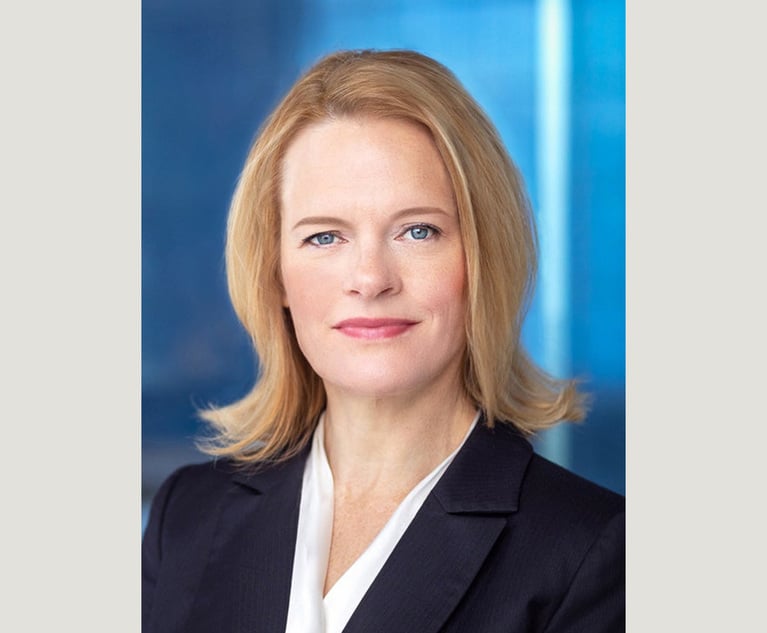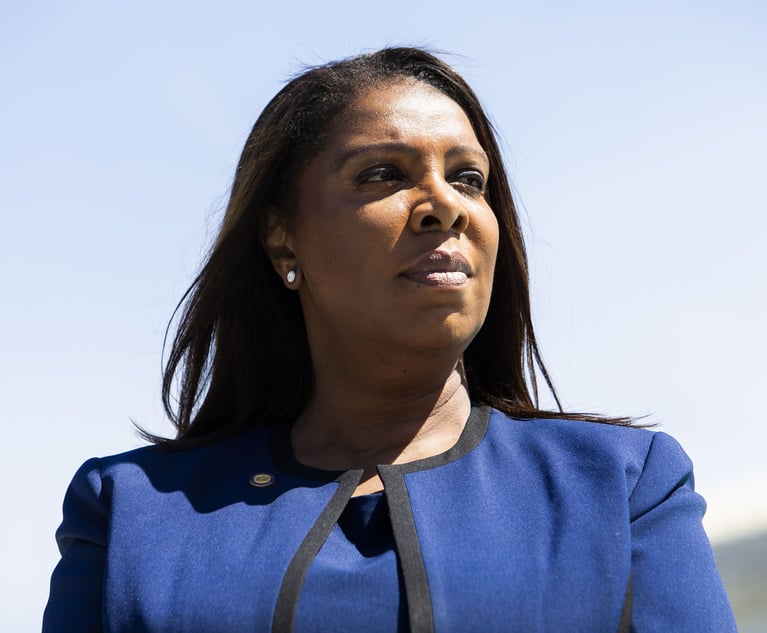An Introduction to NYC's Accelerator PACE Financing Program
The Accelerator Program will undoubtedly be seen by many building owners as an attractive option to pay for the costs associated with LL97 compliance.
June 17, 2022 at 02:00 PM
9 minute read
Financial Services and Banking Local Law 97 (2019 N.Y.C. Local Law No. 97, N.Y.C. Admin. Code. §28.320) (LL97) was enacted in May 2019 by the New York City Council as the "centerpiece" of the New York City Climate Mobilization Act (CMA). LL97 is ambitious legislation aimed at reducing greenhouse gases emitted from many of New York City's largest buildings by 40% by 2030, and by 80% by 2050, requiring the owners to undertake costly upgrades, replacements, and the introduction of new "green" technologies. Another component of the CMA, Local Law 96 (2019 N.Y.C. Local Law No. 96, N.Y.C. Admin. Code. §11-3001) (LL96), establishes the NYC Accelerator PACE Financing Program (the Accelerator Program) to provide financing to fund the costs of LL97 compliance in the form of assessments added to a property's tax bill, known as Property-Assessed Clean Energy (PACE) financing. The New York City Mayor's Office of Climate & Environmental Justice (the OCEJ), together with the New York City Energy Efficiency Corporation (the EEC), are responsible for implementing and administering the Accelerator Program.
Local Law 97 (2019 N.Y.C. Local Law No. 97, N.Y.C. Admin. Code. §28.320) (LL97) was enacted in May 2019 by the New York City Council as the "centerpiece" of the New York City Climate Mobilization Act (CMA). LL97 is ambitious legislation aimed at reducing greenhouse gases emitted from many of New York City's largest buildings by 40% by 2030, and by 80% by 2050, requiring the owners to undertake costly upgrades, replacements, and the introduction of new "green" technologies. Another component of the CMA, Local Law 96 (2019 N.Y.C. Local Law No. 96, N.Y.C. Admin. Code. §11-3001) (LL96), establishes the NYC Accelerator PACE Financing Program (the Accelerator Program) to provide financing to fund the costs of LL97 compliance in the form of assessments added to a property's tax bill, known as Property-Assessed Clean Energy (PACE) financing. The New York City Mayor's Office of Climate & Environmental Justice (the OCEJ), together with the New York City Energy Efficiency Corporation (the EEC), are responsible for implementing and administering the Accelerator Program.
The Accelerator Program will undoubtedly be seen by many building owners as an attractive option to pay for the costs associated with LL97 compliance, since PACE financing provides for: (1) a long-term (potentially 20 years or more), fully-amortizing loan; (2) a fixed, low-interest rate; (3) 100% non-recourse financing; (4) no mortgage recording taxes; (5) no acceleration upon default; and (6) a loan which is not due on sale. These factors make PACE financing more appealing than mezzanine financing, preferred-equity, and bridge loans that generally have much higher interest rates, fund no more than 60%-80% of the cost of the improvements, are likely to require certain types of guarantees from the borrower's "key" principals, and oftentimes have maturity dates only two to three years from the closing. To lay the foundation for the Accelerator Program, below is a brief summary of LL97 and the types of properties to which it applies.
Overview of LL97
The carbon emission reductions mandated by LL97, with certain exceptions, apply to buildings located in New York City that contain 25,000 or more gross square feet; by current estimates, approximately 55,000-57,000 existing buildings. The building carbon emission limits are based upon building size and occupancy pursuant to the New York City Building Code and there are two initial compliance periods: (1) 2024-29; and (2) 2030-34 (thus far, the carbon emissions limits are established only for 2024-2029, which may be found at Greenhouse Gas Emission Reporting-Buildings webpage on nyc.gov). For these "covered" buildings, the building owners must file a Greenhouse Gas Emission Report prepared by a registered design professional with the Office of Building Energy and Emissions Performance, commencing on May 1, 2025, and on May 1st of each year thereafter. LL97, N.Y.C. Admin. Code §28-320.3.7. The penalties for non-compliance with LL97 are: (1) a civil penalty of $268 for each metric ton of carbon dioxide emissions which exceed the established limits (id. at §28-320.6); (2) for the failure to file the report, $0.50 per square foot of the covered building, imposed per month (with a 60-day grace period if the report demonstrates emissions compliance) (id. at §28-320.6.2); and (3) knowingly making a materially false statement in a report or other submission under LL97 is a misdemeanor with a fine not to exceed $500,000 or imprisonment up to 30 days, or both (id. at §28-320.6.3).
This content has been archived. It is available through our partners, LexisNexis® and Bloomberg Law.
To view this content, please continue to their sites.
Not a Lexis Subscriber?
Subscribe Now
Not a Bloomberg Law Subscriber?
Subscribe Now
NOT FOR REPRINT
© 2025 ALM Global, LLC, All Rights Reserved. Request academic re-use from www.copyright.com. All other uses, submit a request to [email protected]. For more information visit Asset & Logo Licensing.
You Might Like
View All
SEC Official Hints at More Restraint With Industry Bars, Less With Wells Meetings
4 minute read
The CFPB Is Digging In for Last Days of Biden's Term. But What Happens Next?
6 minute read

NY AG James Targets Crypto Fraud Which Allegedly Ensnared Victims With Fake Jobs
4 minute readTrending Stories
- 1Uber Files RICO Suit Against Plaintiff-Side Firms Alleging Fraudulent Injury Claims
- 2The Law Firm Disrupted: Scrutinizing the Elephant More Than the Mouse
- 3Inherent Diminished Value Damages Unavailable to 3rd-Party Claimants, Court Says
- 4Pa. Defense Firm Sued by Client Over Ex-Eagles Player's $43.5M Med Mal Win
- 5Losses Mount at Morris Manning, but Departing Ex-Chair Stays Bullish About His Old Firm's Future
Who Got The Work
J. Brugh Lower of Gibbons has entered an appearance for industrial equipment supplier Devco Corporation in a pending trademark infringement lawsuit. The suit, accusing the defendant of selling knock-off Graco products, was filed Dec. 18 in New Jersey District Court by Rivkin Radler on behalf of Graco Inc. and Graco Minnesota. The case, assigned to U.S. District Judge Zahid N. Quraishi, is 3:24-cv-11294, Graco Inc. et al v. Devco Corporation.
Who Got The Work
Rebecca Maller-Stein and Kent A. Yalowitz of Arnold & Porter Kaye Scholer have entered their appearances for Hanaco Venture Capital and its executives, Lior Prosor and David Frankel, in a pending securities lawsuit. The action, filed on Dec. 24 in New York Southern District Court by Zell, Aron & Co. on behalf of Goldeneye Advisors, accuses the defendants of negligently and fraudulently managing the plaintiff's $1 million investment. The case, assigned to U.S. District Judge Vernon S. Broderick, is 1:24-cv-09918, Goldeneye Advisors, LLC v. Hanaco Venture Capital, Ltd. et al.
Who Got The Work
Attorneys from A&O Shearman has stepped in as defense counsel for Toronto-Dominion Bank and other defendants in a pending securities class action. The suit, filed Dec. 11 in New York Southern District Court by Bleichmar Fonti & Auld, accuses the defendants of concealing the bank's 'pervasive' deficiencies in regards to its compliance with the Bank Secrecy Act and the quality of its anti-money laundering controls. The case, assigned to U.S. District Judge Arun Subramanian, is 1:24-cv-09445, Gonzalez v. The Toronto-Dominion Bank et al.
Who Got The Work
Crown Castle International, a Pennsylvania company providing shared communications infrastructure, has turned to Luke D. Wolf of Gordon Rees Scully Mansukhani to fend off a pending breach-of-contract lawsuit. The court action, filed Nov. 25 in Michigan Eastern District Court by Hooper Hathaway PC on behalf of The Town Residences LLC, accuses Crown Castle of failing to transfer approximately $30,000 in utility payments from T-Mobile in breach of a roof-top lease and assignment agreement. The case, assigned to U.S. District Judge Susan K. Declercq, is 2:24-cv-13131, The Town Residences LLC v. T-Mobile US, Inc. et al.
Who Got The Work
Wilfred P. Coronato and Daniel M. Schwartz of McCarter & English have stepped in as defense counsel to Electrolux Home Products Inc. in a pending product liability lawsuit. The court action, filed Nov. 26 in New York Eastern District Court by Poulos Lopiccolo PC and Nagel Rice LLP on behalf of David Stern, alleges that the defendant's refrigerators’ drawers and shelving repeatedly break and fall apart within months after purchase. The case, assigned to U.S. District Judge Joan M. Azrack, is 2:24-cv-08204, Stern v. Electrolux Home Products, Inc.
Featured Firms
Law Offices of Gary Martin Hays & Associates, P.C.
(470) 294-1674
Law Offices of Mark E. Salomone
(857) 444-6468
Smith & Hassler
(713) 739-1250






